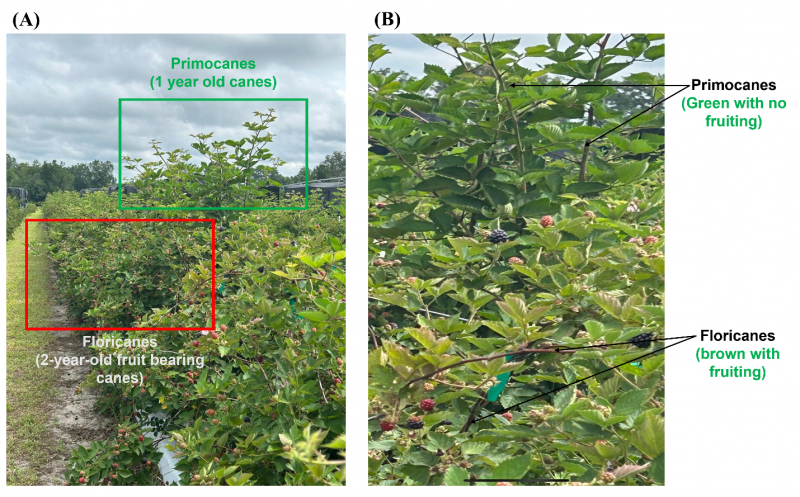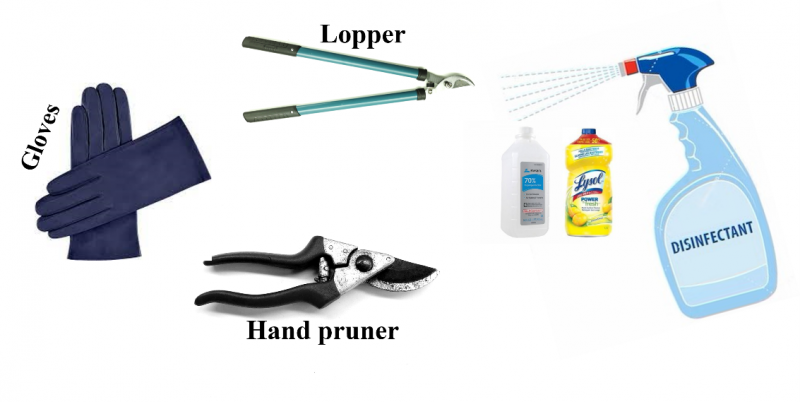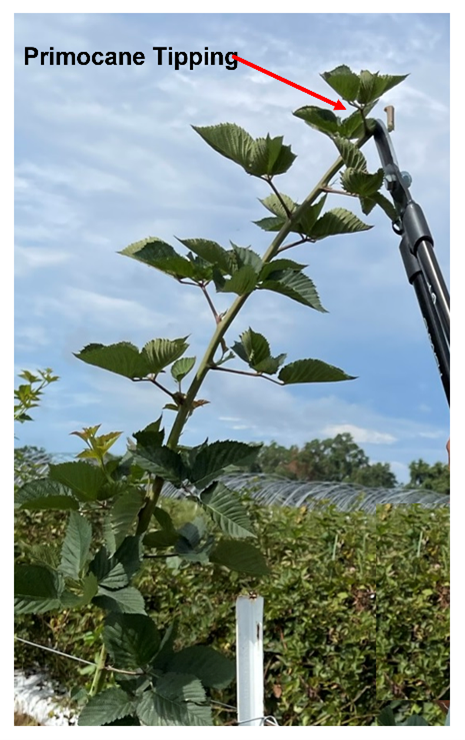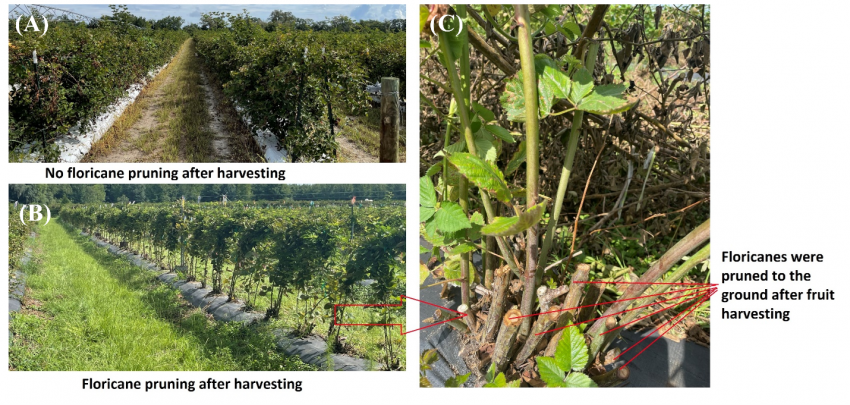Muhammad A. Shahid, and Shahid Iqbal, Fruit Physiology Lab, North Florida Research and Education Center, Quincy FL
Blackberries are an emerging fruit crop in Florida, particularly in North Florida. Various factors contribute to getting high fruit yield and quality, but plant pruning is an important part of proper plant care, and reasonable pruning practices are necessary for good quality fruit and yield. This article provides a general overview of blackberry growth habits, their fruiting forms, pruning times and requirements for commercial production.
–
Blackberry Growth Habit
Blackberries are perennials, but some individual canes (stem) are biennial, meaning vegetative growth happens each year, but fruiting is only produced on the previous year’s vegetative growth. For most varieties, fruit is produced on two-year-old canes; if a cane has fruit set, it will not produce the berries again.
Primocanes are first-year shoots that emerge in April and grow vigorously with thick green foliage, which develop the flower buds in late spring and can grow to several feet if left unpruned. In contrast, floricanes are second-year shoots with more woody canes, flowering in spring and fruit set during the mild summer season that will dieback after harvest (Figure 1 A and B below). A mature plant has both floricanes (older) and primocanes (younger) growing simultaneously, each with different pruning requirements.

Figure 1. Blackberry growing habit. (A) Identification of primocanes (green-top) and floricanes (red-bottom). (B) Primocanes (young branches with green bark color and no fruiting) and Floricanes (older branches with brown bark color).
–
Why and when to prune Blackberry
Pruning is essential to attain optimal fruit size, quality, and yield and protect from disease and other pest injury. It also helps the plant to produce sufficient flowers and fruit for the following season. For floricane blackberry production, pruning should take place in the early summer, late summer, and winter. A proper pruning toolkit must be ready and sterilized before use to prevent diseases from spreading. It’s better to sanitize with alcohol, Lysol, or pine-sol instead of heating (Figure 2 below).
–
Early and late summer pruning/tipping
Blackberry plants have primocanes and floricanes and can easily be distinguished by the bark color of fruit-bearing branches. Primocanes are characterized by apical dominance, which helps the canes to grow at their tips. Removing the tips of primocanes in early summer helps the plant reallocate its energy to produce more lateral branches and improve fruit yield. Primocanes can easily be tipped by hand in early summer when it’s tender, while in late summer, a hand pruner or lopper is used when canes become thicker. Always remove the tip above the leaf and apply fungicide after pruning thicker primocanes to avoid any fungal or pathogen growth. Primocane pruning can also be done after harvesting in early July, along with floricane pruning (Figure 3 right).
In Florida, blackberry is harvested from March through July depending upon the cultivar type, and there is a longer period post-harvest before dormancy. So, if floricane pruning is delayed until winter, it competes with primocanes for nutrients, water, and other beneficial things, which reduces primocane growth and development. Therefore, floricane pruning is recommended in late summer after harvest to promote better growth and development of primocanes for good yield in the following year (Figure 4 below).
–
Recommendations
-
Prune blackberries at the proper time for good growth habits.
–
-
Prune out the diseased or damaged canes and leave 4-6 healthy canes per plant.
_
-
Tipping is more important for good yield in the following year.
–
-
After the last harvest, cut off the old fruiting canes, remove the pruned material from the garden and destroy it.



